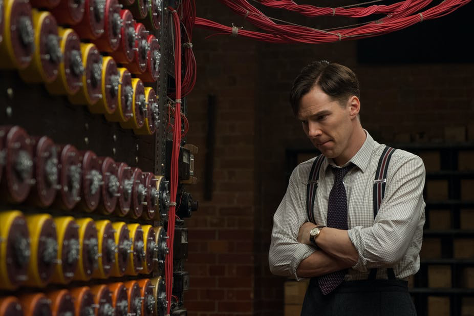How film and media shape our understanding of neurodiversity
A guest post by Amanda
A long time ago, back when I was young and full of hope I decided to study Film and Video at University. Partly because it really interested me and partly because at eighteen the main aim in life was to avoid the world of work for as long as possible. I studied film for three years, learnt how they were made, directed a few, wrote scripts and made a few productions (one involved watching one of my actors drive a rather expensive Chevrolet into a tree. I’m 34 now and my bank account has just about recovered.) The course was great and years later having taken a totally different path in life (as is often the case-now in engineering?!?) the interest has stayed with me. There have been some great talks about Neurodiversity which made me think about the way film and media has affected our perceptions on this subject and how it’s influenced the way we view different people.
There are a handful of films that address the neurodiverse and their journeys through life, both directly and indirectly. Though most of these have paved the way to start conversations about autism, the spectrum and different types of minds, they have also created a few misconceptions and because of the times when some of them were made, they may have not handled the subject in the most accurate or understanding manner. Some have brought to the forefront the journeys of the neurodiverse community, the struggles, the celebrations and have really helped more people be seen in society, but conversely others have patched together inaccurate templates in the public’s mind and turned a person’s life experience into nothing more than a formulaic diagnosis or an out of step stock character: The tortured genius. The rain main. The misfit. The outsider. The oddball. The loner.
When you hear that someone has Autism, Dyslexia, ADHD, Dyspraxia often films and media will be filling in the gaps in your knowledge and giving you the information and references as to what that must mean and may affect how you interact with that individual. The problem being that its often not an accurate representation of them as a person. You will get so much more from speaking to someone about their experience as an individual than you will from films, tv, media and even documentaries.

If we look at films like the Imitation Game, we get a depiction of Alan Turing the breaker of the German Enigma code and the film alludes to signs of Asperger’s. He is brilliant at mathematics, but unable to make basic social interactions without causing estrangement or offence. When being introduced to the enigma machine and the group of experts he would potentially work with to crack the code his curt reply is: “I don’t have time to explain myself as I go along. I’m afraid these men would only slow me down.” Irritating his superiors and ostracising his colleagues. Now this isn’t an attack on Imitation Game as a movie at all, it’s just to remind the viewer to be careful not to take the depictions as the be all and end all of a complex issue. Not everyone is the same. We must remember that these are films are a heightened version of reality. Drama is exactly that, big monologues, big emotions, big drama! This film is trying to engage you, move you, pull on your heart strings. It’s a great art form but we must put it in its place and be mindful that it is simply imitating and interpreting what’s going on in real life. The movie wouldn’t have been half as dramatic if the story was: Alan had a little issue working with others, but he was fine most of the time.

In Rainman (1988) we are shown examples of autism in the character Raymond, who can glance at spilled toothpicks on the floor and know the exact amount there. His brother then goes onto exploit his brilliant abilities. Problematically this film has helped put out a stereotype of autism, but at the same time it still stands as a valid document of the way it was viewed at that time and its strength lies in that fact that it looks at themes like exploitation, maltreatment and societies unwillingness to accommodate those who are different and well as bravely putting this on screen. Now these depictions in some cases can be accurate and close to the truth or sometimes wildly inaccurate, but everyone is an individual and no two people are alike even with similar neurodiverse traits. The spectrum is a sliding scale and the way a neurodiverse person thinks is shaped by people’s experiences, their individual biology/mind, upbringing, access to aid and the worlds ability to accept and understand that them.
It seems silly to even point this out, but Autistic people can understand the nuances of humour and sarcasm (Hannah Gadsby famous comic with high functioning autism-Get on Netflix and watch Nanette/Douglas). You can have Asperger’s and get through a social interaction without everyone thinking your rude or abrupt (Dan Aykroid, Sir Anthony Hopkins), have dyslexia and read and write to a high level and string a sentence together. (Whoopi Goldberg, Richard Branson.)
Let’s take Jack Bouer in 24 as a prime example of things not being that accurate on screen. When was the last time you saw him do his expenses? Argue with his colleagues about who’s doing the Christmas shift this year. Get shouted at by his manager because he hasn’t done his mandatory health and safety training. Never. In 24 hours he dopes not even go to the loo! And why? Well it wouldn’t make for a very good action film. Comedy maybe. Seeing Jack Bouer stomping round the office trying to find a working keyboard would be funny, but it’s not what we go to the cinema to see. It’s the fantasy, it’s the break from reality. You don’t see this because that isn’t dramatic. That doesn’t sell at the box office and what we go to the cinema for that particular set of films is something larger than life. When neurodiverse people are portrayed on screen similarly there can be misrepresentation. Either Rain man or an aloof genius and not much in between.
Watch films, tv shows, enjoy them, but don’t forget what they are. Someone’s interpretation of reality, an attempt to make you laugh and cry and feel. You’re going to learn a lot more by interacting and spending time with neurodiverse people and asking them questions than you’ll ever learn on the silver screen. That said here’s a few things to show you some representations either good or bad and perhaps (I’m hoping) confuse you even further. At the very least get you thinking about your own knowledge on these subjects and ways you might fill in those gaps.
Neurodiversity on screen:
The Secret (1992)
Rainman (1988.)
The Imitation Game (2014.)
X+Y (2015.)
Temple Grandin (2010.)
Snowcake (2006)
Little man Tate (1991.)
The boy Who could fly (1986)
Silence (1974)
A Boy called Po (2016)
Extremely Loud and Incredibly Close (2011)
Ocean Heaven (2010.)
My Name is Khan (2010.)
Adam (2009.)
I am Sam (2001)
The Other Sister (1999)
What’s Eating Gilbert Grape (1993.)
The Accountant (2016.)
A Mind of Her Own (2006.)
Mercury Rising (1998.)
Life Animated (2016)
Tv Series:
The Big Bang Theory,
Young Sheldon
Atypical
The Good doctor
The A word
Netflix
Nannette/Douglas-Hannah Gadsby.

